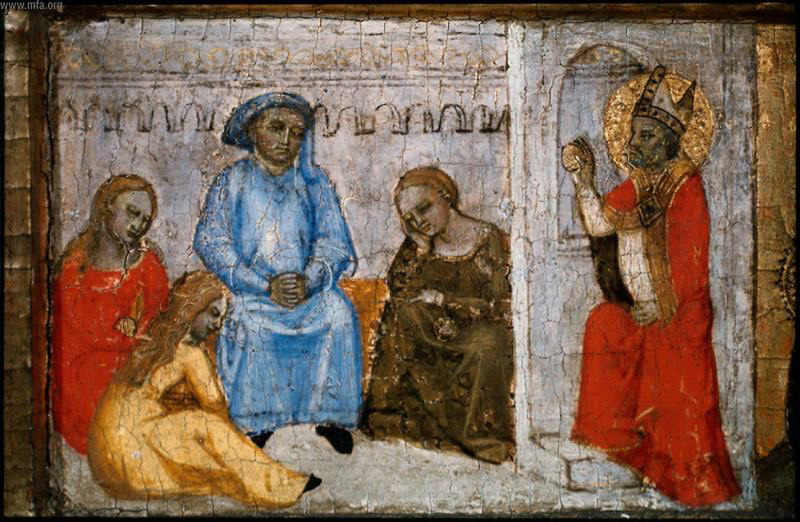Daily Office Readings for the feast of Nicholas, Bishop of Myra, December 6, 2019:
Although our Gospel reading today was clearly meant, on this feast of St. Nicholas, to parallel Nicholas’ love of children, Nicholas was actually the friend of a lot of folks in his day–seafarers, pawnbrokers, young unmarried women, and shopkeepers, just to name a few. Yet we know very little of his life in the historical-factual sense. Unlike many of the saints of the early church, we’ve yet to find any of his writings, and the earliest references to him appear around 200 years after his death. What we know about Nicholas comes from the accounting of his deeds, embellished as some of them might be, and as late as they might have been written.
It would be easy to dismiss Nicholas as a “fake saint”, but we do at least have a tomb and remains that are purportedly his, and we have a 2014 examination and reconstruction of those remains by forensic artist and anthropologist Caroline Wilkinson. (Interestingly, Nicholas evidently had a broken nose–perhaps Arius punched back in the fabled story of Nicholas slapping him upside the head?)
Dr. Wilkinson was at least able to recreate an image that, when we compare them with icons of Nicholas, can at least give us some degree of historical assurance that there was a Nicholas of Myra–and what we know about storytelling, is that even in the most mythical of stories, are embedded kernels of truth. In all fairness, there’s an understandable reason for why very little record of him exists–he lived during the Diocletian persecution, a time that was not only turbulent for Christians, but for Romans, also, with the division of authority going on in the Roman Empire. Historians of the day probably didn’t have time to devote many column-inches to a wandering bishop from what is now Turkey.
What we know from the stories, whether he was calming storms at sea, rescuing unmarried girls from prostitution by throwing bags of gold into their family homes, bailing out debtors, or resurrecting pickled boys from barrels of brine, was this: His heart was clearly geared towards the marginalized. Girls too poor for dowries, sailors, deadbeat debtors, and street urchins were not exactly polite company. Yet they are the meat and potatoes of the legends that exist about him.
We also know that his modus operandi was often anonymity. In many of the stories, he either acts anonymously (as in when he tosses bags of gold coins in the home of the three unmarried young girls), or when he helps someone, he cautions them not to say who it was from. We still carry on this tradition every time we give an anonymous Christmas present and sign it, “From St. Nick.”
Nicholas was popular enough as a saint that he had no shortage of devoted followers by the seventh century. His following remained strong enough that even in the widespread sweep of Protestant Reformation across Europe, when cities tried to ban the baking of cookies of his image…well…it didn’t stop the cookie bakers. He remains a popular December subject of European bakers to this day. Even in 2019, bishops can’t resist giving him a nod in December. In more recent years, a controversy has arisen whether his bones should be returned from Italy to the home of his former see in Myra. (Truthfully, at best, the story of how his bones got to Italy can probably best be described as “holy robbery.”) Nicholas’ popularity has only grown in subsequent centuries, perhaps simply because this broken old world still cries for his generosity of spirit and humility in anonymity.
As tempting as it is to simply stay in the mode of Nicholas as “ancient precursor to our modern Santa Claus”, we honor Nicholas best if we plunge ourselves more deeply into emulating his love for aiding the marginalized. We live in a world where far too many children turn up missing, are whisked away for sex trafficking purposes, or are separated fom their parents and placed in cages in the name of orderly government.
I simply pose one question: What would Nicholas do?
Maria Evans splits her week between being a pathologist and laboratory director in Kirksville, MO, and gratefully serving in the Episcopal Diocese of Missouri , as the Interim Pastor at Christ Episcopal Church, Rolla, MO.

